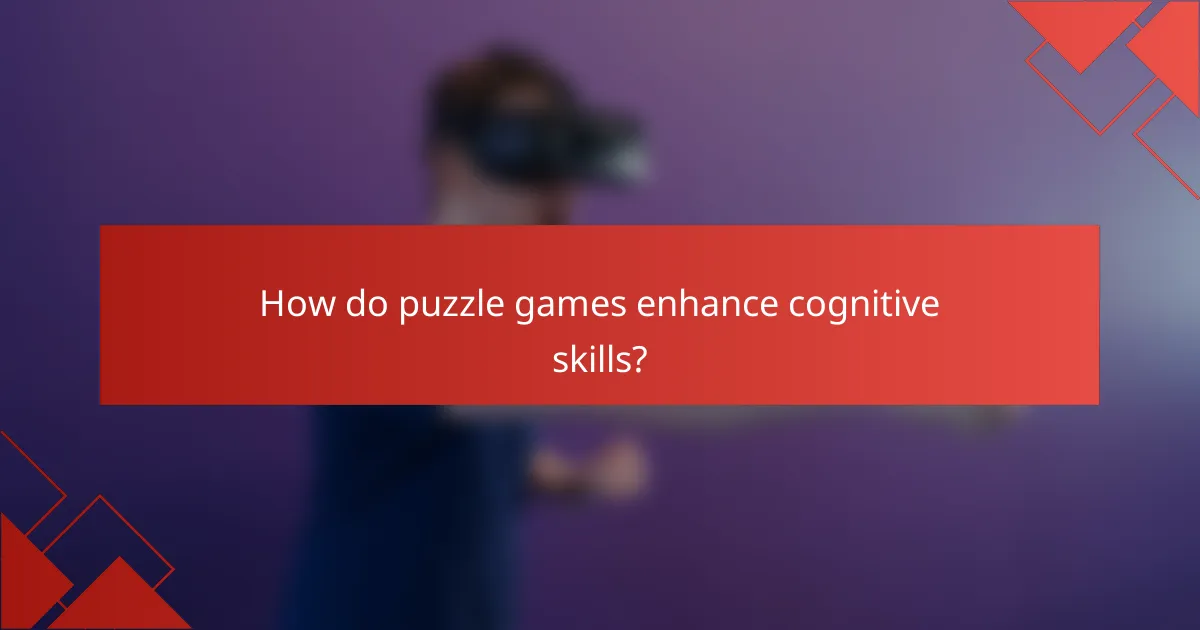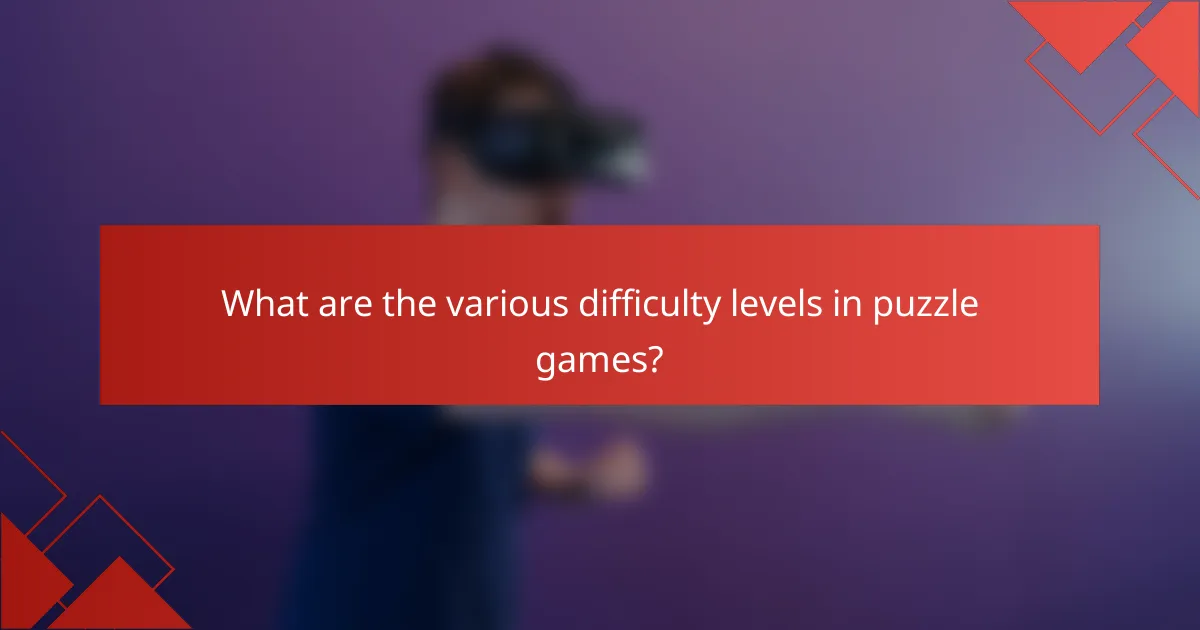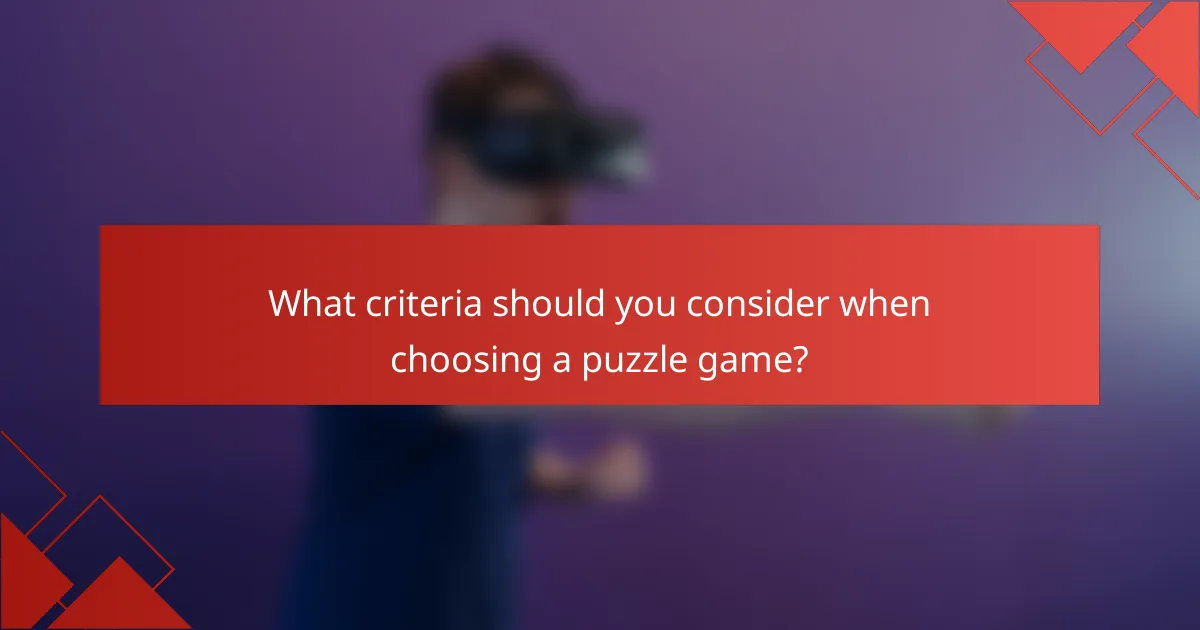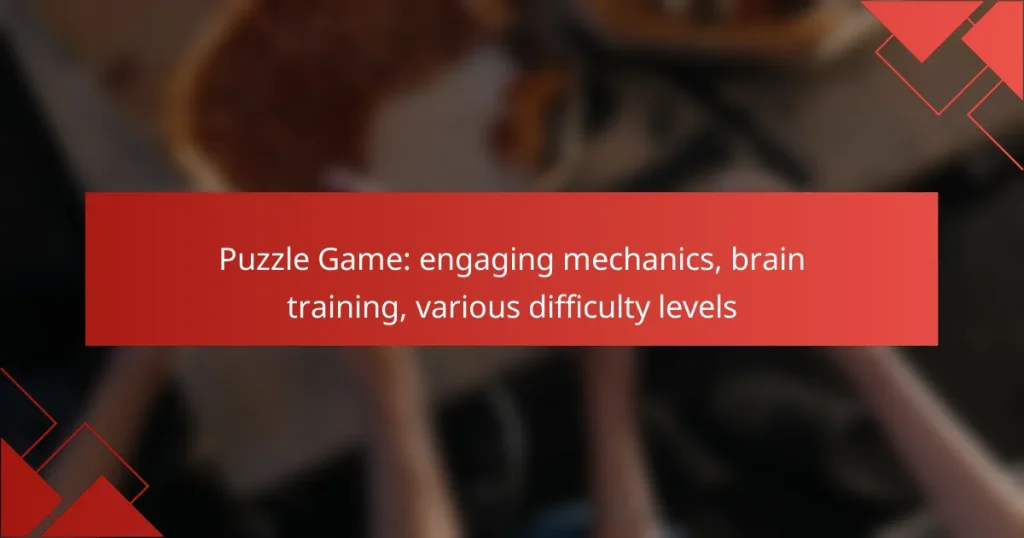Puzzle games offer an exciting way to enhance cognitive skills through engaging mechanics that challenge players to think critically and strategically. With various difficulty levels ranging from beginner to advanced, these games cater to all skill sets, ensuring a stimulating experience for everyone. As players navigate through timed challenges and multi-level progressions, they not only enjoy the gameplay but also improve their brain function and problem-solving abilities.

How do puzzle games enhance cognitive skills?
Puzzle games significantly enhance cognitive skills by challenging players to think critically and strategically. These games stimulate various mental processes, leading to improved brain function and overall cognitive development.
Improves problem-solving abilities
Puzzle games require players to analyze situations, identify patterns, and devise strategies to overcome challenges. This process enhances problem-solving skills by encouraging logical thinking and creativity. For instance, games like Sudoku or crosswords compel players to approach problems from multiple angles.
To maximize the benefits, players should gradually increase the difficulty level of the puzzles they tackle. Starting with simpler puzzles and progressing to more complex ones can help build confidence and skill over time.
Boosts memory retention
Engaging with puzzles can significantly boost memory retention by requiring players to remember rules, patterns, and previous moves. This active engagement helps strengthen neural connections associated with memory. Games that involve matching or recalling items, like memory cards, are particularly effective.
To enhance memory benefits, players should practice regularly, aiming for sessions that last around 20-30 minutes. Consistency is key, as frequent engagement leads to better retention and recall abilities.
Enhances spatial reasoning
Puzzle games often involve manipulating shapes and understanding spatial relationships, which can enhance spatial reasoning skills. Games like Tetris or jigsaw puzzles require players to visualize how pieces fit together, improving their ability to think in three dimensions.
To further develop spatial reasoning, players can explore a variety of puzzle types, including those that involve rotation and reflection. Incorporating different styles of puzzles can provide a well-rounded approach to enhancing these cognitive skills.

What are the engaging mechanics of puzzle games?
Puzzle games feature engaging mechanics that challenge players to think critically and solve problems. These mechanics often include timed challenges, multi-level progression, and interactive elements that keep the gameplay dynamic and stimulating.
Timed challenges
Timed challenges add urgency to puzzle games, pushing players to complete tasks within a set timeframe. This mechanic enhances excitement and can increase the difficulty level, as players must balance speed with accuracy.
For example, a player might have only a few minutes to solve a series of puzzles, which can lead to higher scores or unlock special rewards. However, it’s essential to manage stress levels, as rushing can lead to mistakes.
Multi-level progression
Multi-level progression allows players to advance through various stages, each with increasing complexity. This structure keeps players engaged by providing a sense of achievement as they conquer more challenging puzzles.
Typically, early levels introduce basic concepts, while later levels incorporate advanced mechanics and require strategic thinking. Players should be aware that skipping levels can lead to gaps in understanding, making future challenges more difficult.
Interactive elements
Interactive elements, such as movable pieces or environmental changes, enhance player engagement by creating a more immersive experience. These features encourage experimentation and problem-solving, as players must manipulate their surroundings to succeed.
For instance, a puzzle might involve rotating blocks to create a pathway, requiring players to think spatially. It’s beneficial to explore all possible interactions, as overlooked elements can be crucial for solving complex puzzles.

What are the various difficulty levels in puzzle games?
Puzzle games typically feature three main difficulty levels: beginner, intermediate, and advanced. Each level is designed to challenge players progressively, catering to different skill sets and experience levels.
Beginner levels
Beginner levels in puzzle games are designed for new players, focusing on basic mechanics and simple problem-solving. These levels often include straightforward tasks that help players familiarize themselves with game controls and objectives.
Common characteristics of beginner levels include limited time constraints and fewer obstacles, allowing players to build confidence. Examples might include basic jigsaw puzzles or simple matching games that introduce fundamental concepts without overwhelming the player.
Intermediate levels
Intermediate levels present a moderate challenge, requiring players to apply skills learned in beginner stages while introducing new mechanics. These levels often feature more complex puzzles that may involve multiple steps or require strategic thinking.
Players can expect increased time limits and additional elements, such as varying shapes or colors. This level might include puzzles that require players to solve riddles or navigate mazes, enhancing cognitive skills and problem-solving abilities.
Advanced levels
Advanced levels are tailored for experienced players, offering intricate puzzles that demand high levels of critical thinking and creativity. These challenges often involve multiple layers of complexity, requiring players to think several steps ahead.
Advanced puzzles may include time pressure, intricate patterns, or require the use of advanced strategies. Examples include complex Sudoku variations or logic puzzles that necessitate a deep understanding of the game mechanics and a high degree of focus.

Which popular puzzle games are available in the UK?
In the UK, several popular puzzle games engage players with varying mechanics and difficulty levels. These games not only provide entertainment but also serve as effective brain training tools.
Sudoku
Sudoku is a number-placement puzzle that requires players to fill a 9×9 grid with digits so that each column, row, and 3×3 subgrid contains all the numbers from 1 to 9 without repetition. It typically comes in various difficulty levels, ranging from easy to extremely challenging.
To improve your Sudoku skills, start with easier puzzles to grasp the basic strategies, such as scanning for obvious placements and using the process of elimination. As you progress, you can tackle more complex grids that may require advanced techniques like X-Wing or Swordfish.
Crossword puzzles
Crossword puzzles consist of a grid filled with words based on given clues, where players must think of words that fit both horizontally and vertically. They can vary in difficulty, with some being simple and others requiring extensive vocabulary and knowledge of trivia.
To excel at crosswords, familiarize yourself with common clues and word patterns. Regular practice can enhance your skills, making it easier to tackle tougher puzzles. Avoid getting stuck on a single clue; instead, move on and return later to keep your momentum.
Jigsaw puzzles
Jigsaw puzzles involve assembling numerous interlocking pieces to form a complete picture. They come in various piece counts and complexity, catering to both beginners and seasoned enthusiasts. The experience can be both relaxing and mentally stimulating.
When starting a jigsaw puzzle, sort pieces by color or edge pieces to create a framework. Set aside time to work on it regularly, as this can help maintain focus and improve completion speed. Don’t hesitate to take breaks if you feel frustrated; returning with fresh eyes can often lead to breakthroughs.

What criteria should you consider when choosing a puzzle game?
When selecting a puzzle game, consider factors such as the target audience, game mechanics, and difficulty levels. These elements will help ensure that the game is engaging and suitable for your preferences or those of the intended players.
Target audience
Understanding the target audience is crucial when choosing a puzzle game. Different age groups and skill levels may prefer varying complexities and themes. For instance, children might enjoy colorful, simple puzzles, while adults may seek more challenging and strategic options.
Consider the interests and cognitive abilities of the players. A game designed for casual players might focus on fun and relaxation, while one aimed at enthusiasts may incorporate intricate logic and problem-solving elements. Tailoring the game to its audience enhances engagement and enjoyment.
Game mechanics
The game mechanics define how players interact with the puzzle. Look for features such as tile matching, logic puzzles, or spatial reasoning challenges. Each mechanic offers a different experience and can appeal to various preferences.
For example, tile-matching games often provide quick gratification and are easy to learn, making them suitable for casual gamers. In contrast, games that require deeper strategic thinking may involve more complex rules and longer play sessions, appealing to those who enjoy a mental workout.
Evaluate the balance of challenge and reward in the mechanics. A well-designed puzzle game should provide a satisfying progression, where players feel a sense of achievement as they advance through levels or solve increasingly difficult challenges.


